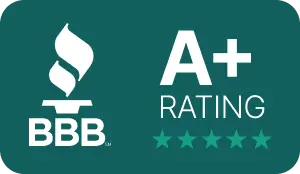Why Medicaid rules complicate an unexpected inheritance
Medicaid’s long-term-care coverage is a lifeline precisely because it sets strict financial limits. Most states cap countable resources at $2,000 and treat any lump-sum inheritance as a new asset that can bump a recipient off the rolls until the money is “spent down.” That reality leads many beneficiaries to explore a probate advance—a non-recourse transaction that converts an expected distribution into cash today without adding a traditional debt to the recipient’s balance sheet. The question is whether that infusion will be viewed as income or a resource when Medicaid re-evaluates eligibility.
How a probate advance is structured
Unlike a conventional loan, the funding company purchases part of the heir’s future interest in the estate. Repayment comes only from the estate when the court finally authorizes distribution. Because the recipient never owes monthly payments and offers no personal collateral, many state Medicaid agencies do not classify the advance as a loan. Instead, they focus on what enters the applicant’s control: the cash wired to the recipient’s bank account. That money usually counts as a resource on the first day of the following month, triggering the same limits that apply to any other asset.
Timing is everything
Suppose an heir expects $60,000 but receives $20,000 up front. If that cash arrives on July 28, the beneficiary may spend qualified amounts—medical bills, home modifications, or debt retirement—before August 1 to stay below the resource ceiling. Because courts often move at a glacial pace, the advance accelerates funds into a window where strategic spending and trust planning are still possible, rather than months later when Medicaid coverage might already have lapsed. Proper pacing works only when recipients understand the program’s “first-of-the-next-month” rule and coordinate with benefits counsel before signing anything.
Income versus resources: reading the fine print
Federal guidance leaves classification largely to the states, and policies differ. Some treat an advance as unearned income in the month received; others view it as a conversion of an asset the applicant already owned in expectation, making it a resource right away. Either way, undocumented transfers can trigger penalties during Medicaid’s look-back period. A written record showing that the advance was exchanged for the heir’s equitable interest—not gifted—helps avoid allegations of improper transfers. Keeping copies of the funding agreement, settlement statement, and estate inventory provides the paper trail caseworkers seek.
Preventing misappropriation while you wait
Because many Medicaid recipients are elderly or disabled, they can be prime targets for manipulative relatives or opportunistic executors. Watching for warning signs of estate fraud—such as mysterious withdrawals from estate accounts or sudden changes in property insurance—becomes harder when medical needs keep the heir home-bound. The liquidity from a probate advance can pay for a forensic accountant or attorney to intervene quickly, preserving both the inheritance and future Medicaid eligibility.
Keeping the roof, not selling the house
A common dilemma is whether to liquidate inherited real estate to pay bills that Medicaid won’t cover. By tapping funding, heirs can avoid a forced sale, instead covering taxes, maintenance, and insurance until the probate court gives clear title. Doing so preserves potential rental income that may be disregarded or partially excluded under certain Medicaid rules, allowing the beneficiary to keep the family home in the long term without jeopardizing present care.
Financing a will contest without risking benefits
If another relative challenges the estate plan, Medicaid recipients rarely have spare cash to hire counsel. An advance may fund litigation in a will dispute without resorting to credit cards or personal loans that increase countable assets. Because the transaction is tied to the disputed share, funds flow in proportion to the potential recovery, providing a disciplined budget for legal fees that aligns with Medicaid spend-down strategies.
Estate sale versus early cash: which safeguards coverage?
Choosing whether to wait for full distribution, pursue an advance, or liquidate estate assets outright is ultimately a resource-management exercise. For some beneficiaries, selling assets means an infusion so large it automatically suspends benefits, forcing them to self-pay nursing-home bills until the balance drops again. Others find that a measured payout preserves coverage. Weighing these options helps heirs protect your family legacy while honoring Medicaid thresholds; often, splitting the difference—taking a modest advance and allowing the rest to vest later—strikes the best balance.
Special considerations for out-of-state or overseas heirs
Medicaid policy applies only in the state administering benefits, yet many heirs live elsewhere. Coordinating spending rules across jurisdictions can be complex, especially if the recipient resides near a state border or in another country for retirement. Lessons learned by cross-border heirs—like handling currency conversion costs and remote document signing—also help domestic Medicaid beneficiaries anticipate bureaucratic delays that might push them past resource re-determination dates.
Practical steps before you commit
Work with an elder-law attorney or certified Medicaid planner to map out how incoming funds will be used within the allowable time frame. Pre-paying funeral expenses, clearing medically necessary debt, and buying exempt assets—such as a burial plot or certain home improvements—are common tactics. Document every purchase meticulously; receipts are your shield if benefits officials question the spend-down. And when scheduling the wire from the funding company, aim for early in the month so you have the full thirty days to implement your plan.
Why an inheritance advance may still make sense
Critics occasionally argue that an inheritance advance costs more than waiting. Yet Medicaid’s asset limits flip that equation for many recipients: holding onto a large distribution can disqualify coverage and rapidly consume the money through private-pay nursing rates exceeding $9,000 per month in some states. A smaller, well-timed advance paired with strategic spending may preserve benefits and quality of life.
Key takeaways
Medicaid eligibility is not automatically lost when you accept a probate advance, but careless timing can convert a helpful tool into an expensive mistake. Understand whether your state labels the cash as income or a resource, coordinate the disbursement date with your planner, and keep immaculate records of how every dollar is spent or sheltered. By treating the advance as one piece of a broader benefits strategy—alongside fraud prevention, property preservation, and possible litigation—you can unlock the value of your inheritance without sacrificing the care Medicaid provides.








